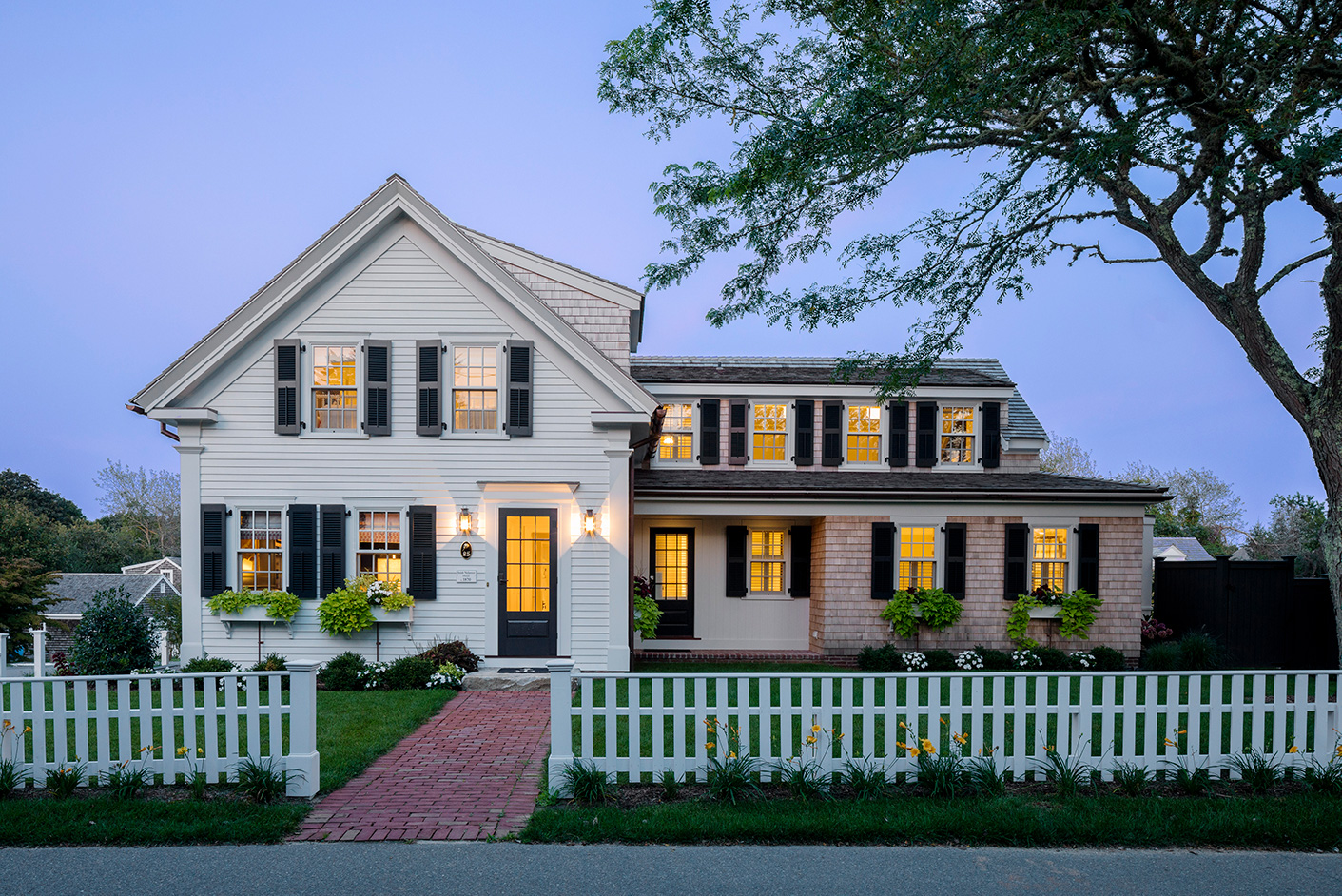Back in December, we examined ways in which layers of elements can help build an architectural greeting from the curb to the front door. Features like entrance gates, cobbled edging along a drive or within a motorcourt, enclosed vestibules, and elevated foyers—all were explored in the comprehensive blog post A Grand Entrance with plenty of examples taken from our work.
After delving into that post, many reached out with a practical question—what can be done to give older properties with unsightly concrete stairs a small facelift? What materials would be best, and how is one to choose?

Take cues from the history of a house to make changes for the future
When performing an exterior revision, always assess a home’s existing storyline before making any modifications. What materials are featured in the original structure? What is the style of architecture or period of the house? Ideally, revisions should appear authentic in nature, not as though they were added on 50+ years later.

Use timeless materials to honor the past
When renovating older properties, we often specify materials like brick, fieldstone, bluestone, and granite for exterior stairs. While brick and fieldstone are not often mixed, each couples nicely with bluestone treads for a stair that is durable in nature and timeless in appeal. Look to a home’s foundation for clues—if your foundation is clad in brick or fieldstone, choose the same for your exterior stair riser. If a foundation is exposed concrete, consider veneering the foundation in brick or stone to match your new stair riser for an ideal, cohesive composition. For antique homes, a solid granite tread can often be used as a sole step up to an entry door.


Consider scale, size, and building codes
When assessing entrances, we often explore whether it’s possible to use fewer than 3 stairs to reach the door. In Massachusetts, keeping the stairs to 3 or fewer eliminates the need for handrails, an aesthetic choice we prefer. Be sure to check building codes where your property is located to ensure your changes will be in compliance.

If this practical question has you wondering about your own property, contact us to learn how we might approach the project. In the interim, we invite you to find meaningful inspiration in our portfolio.